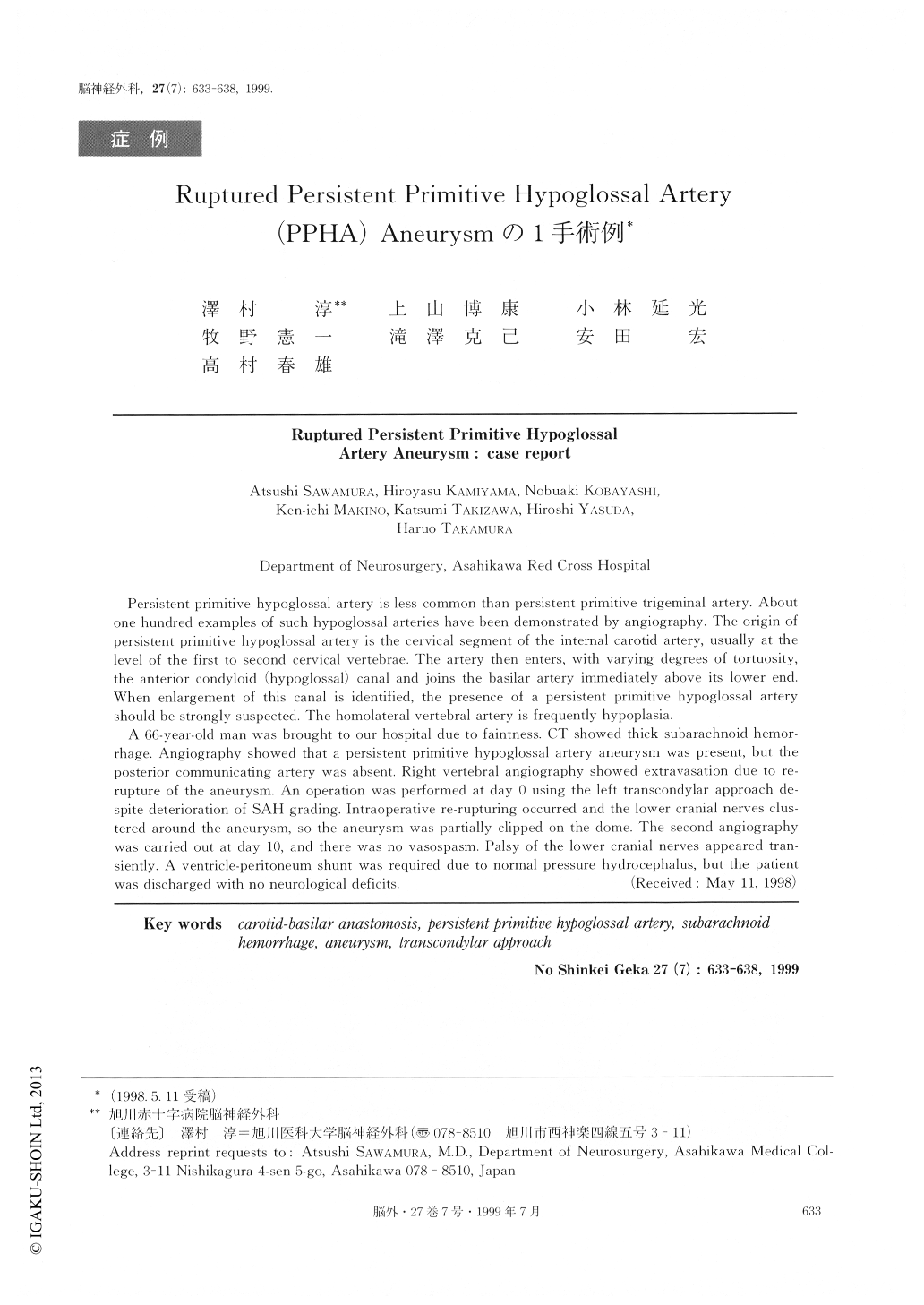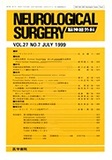Japanese
English
- 有料閲覧
- Abstract 文献概要
- 1ページ目 Look Inside
I.はじめに
遺残性原始舌下動脈は遺残性原始動脈の中でも稀有な存在であり,これまで破裂遺残性原始舌下動脈瘤の報告は過去に9例しかなく本邦では4例の報告があるにすぎない.脳血管造影で確認された遺残性原始舌下動脈自体もこれまで100例程を認めるにすぎない.遺残性原始舌下動脈は通常,頸部(普通第1,第2頸椎の高さ)内頸動脈から出て舌下神経管を通り脳底動脈の最も近位側で交通する.同側の椎骨動脈は,しばしば形成不全を示す.今回,破裂遺残性原始舌下動脈瘤の症例を経験したので文献的考察を加えて報告する.
Persistent primitive hypoglossal artery is less common than persistent primitive trigeminal artery. Aboutone hundred examples of such hypoglossal arteries have been demonstrated by angiography. The origin ofpersistent primitive hypoglossal artery is the cervical segment of the internal carotid artery, usually at thelevel of the first to second cervical vertebrae. The artery then enters, with varying degrees of tortuosity,the anterior condyloid (hypoglossal) canal and joins the basilar artery immediately above its lower end. When enlargement of this canal is identified, the presence of a persistent primitive hypoglossal arteryshould be strongly suspected. The homolateral vertebral artery is frequently hypoplasia.
A 66-year-old man was brought to our hospital due to faintness. CT showed thick subarachnoid hemor-rhage. Angiography showed that a persistent primitive hypoglossal artery aneurysm was present, but theposterior communicating artery was absent. Right vertebral angiography showed extravasation clue to re-rupture of the aneurysm. An operation was performed at clay 0 using the left transcondylar approach de-spite deterioration of SAH grading. Intraoperative re-rupturing occurred and the lower cranial nerves clus-tered around the aneurysm, so the aneurysm was partially clipped on the dome. The second angiographywas carried out at clay 10, and there was no vasospasm. Palsy of the lower cranial nerves appeared tran-siently. A ventricle-peritoneum shunt was required due to normal pressure hydrocephalus, but the patientwas discharged with no neurological deficits.

Copyright © 1999, Igaku-Shoin Ltd. All rights reserved.


